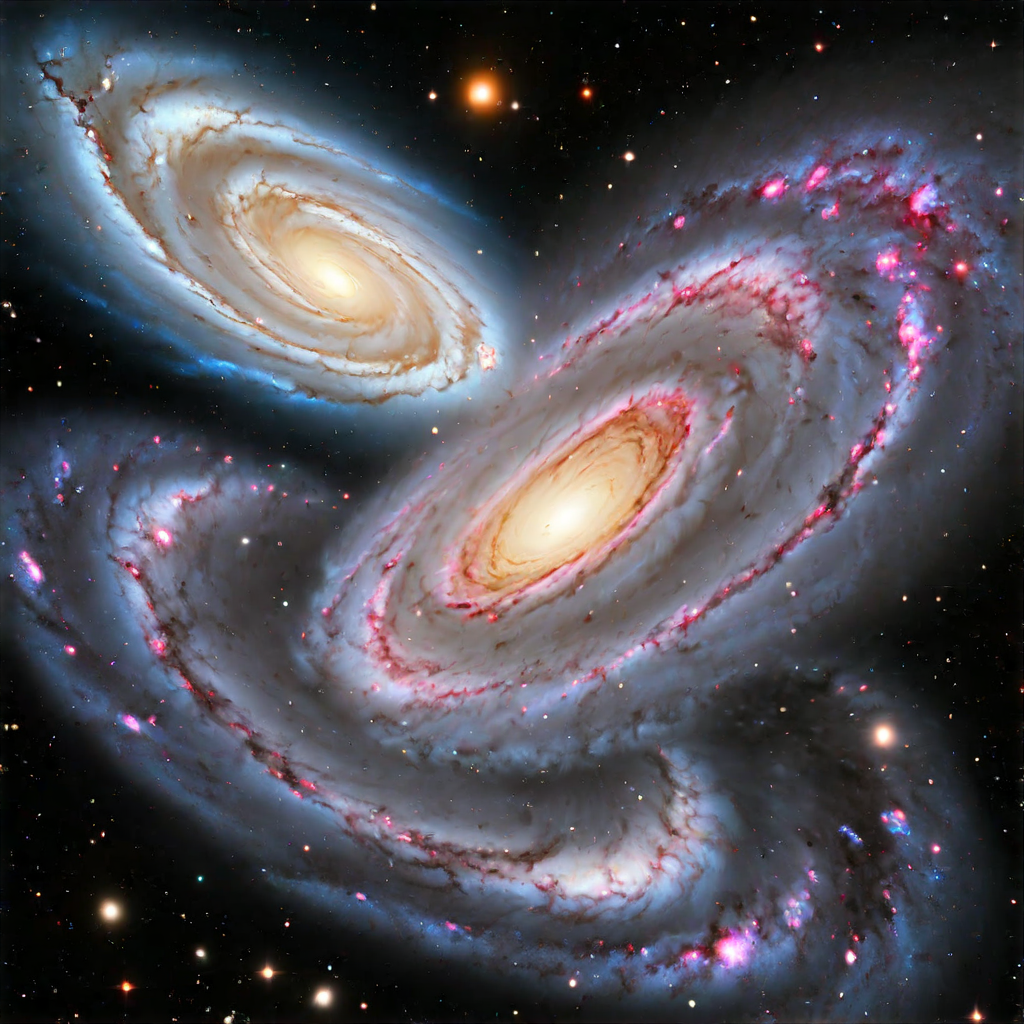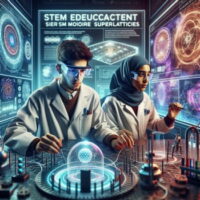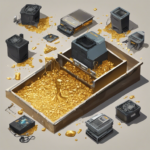The Hubble Space Telescope has captured a galaxy collision event in stunning detail, showing how newborn star clusters form along tidal tails. When galaxies collide, it sets off a spectacular cosmic event that not only shapes the galaxies themselves, but also creates new stars and possibly new planets.
The image, taken by the Hubble Space Telescope, shows galaxy AM 1054-325 which has been distorted into an S-shape by the gravitational pull of a neighboring galaxy. This distortion has resulted in long tidal tails made up of gas, dust, and a plethora of stars. Along these tails, Hubble’s sharp vision has revealed 425 clusters of newborn stars that resemble strings of holiday lights.
When galaxies collide, it sets off a spectacular cosmic event that not only shapes the galaxies themselves, but also creates new stars and possibly new planets. The Hubble Space Telescope has captured one such event in stunning detail, showing how newborn star clusters form along tidal tails.
The image, taken by the Hubble Space Telescope, shows galaxy AM 1054-325 which has been distorted into an S-shape by the gravitational pull of a neighboring galaxy. This distortion has resulted in long tidal tails made up of gas, dust, and a plethora of stars. Along these tails, Hubble’s sharp vision has revealed 425 clusters of newborn stars that resemble strings of holiday lights.

These clusters are formed when knots of gas collapse under the force of gravity to create approximately 1 million newborn stars per cluster. The study, published in Monthly Notices of the Royal Astronomical Society, used near-infrared capabilities to determine the ages and masses of these star clusters.
These observations tell us how stars form and what regulates those processes. This knowledge is critical in understanding how stars in our own galaxy were formed, said Associate Professor Sanchayeeta Borthakur from Arizona State University’s School of Earth and Space Exploration.
Source: https://phys.org/news/2024-02-hubble-pearls-star-clusters-galaxy.html
The team found that these clusters are very young at only 10 million years old and seem to be forming at the same rate along tails stretching for thousands of light-years. This discovery sheds light on the processes of star formation and how it is regulated in galaxies.
The tidal tails seen in this image are created when two galaxies interact and their gravitational forces pull out long streamers of gas and dust. This process stretches out the spiral arms of a galaxy, creating these stunning structures.
Before the collision, the galaxies were rich in dusty clouds of molecular hydrogen that may have remained inert. But as they were jostled and bumped into each other during the encounter, these clouds were compressed, triggering the formation of new stars.






